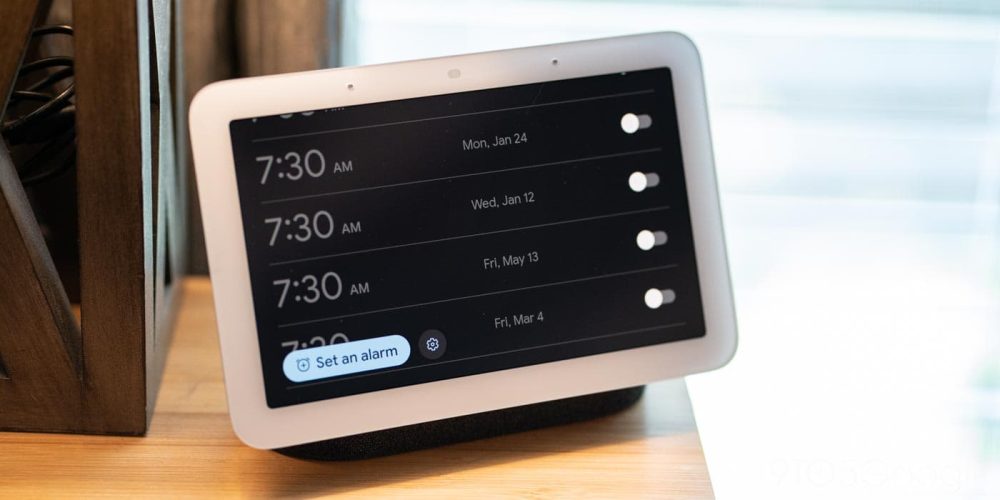
Google’s Nest Hub has a huge variety of uses, but one of its best is also one of the simplest – a bedside alarm clock. However, Nest Hub alarms really need some quality-of-life touches.
Nest Hub alarms are convenient
I’ve been using Google’s Nest Hub, and now the second generation, as my bedside alarm clock for a few years now, and I’ve been extraordinarily happy with it. Like any other Google Assistant device, it’s easy to build setting an alarm into a nightly bedtime routine on the device, alongside adjusting smart home devices and playing some music at a low volume while I fall asleep.
And that just gets better when you consider that you can also have Nest Hub alarms trigger a second routine when you turn them off in the morning. The possibilities are huge, and it really goes above and beyond what you’d get out of a normal alarm.
Better yet, it’s so easy to snooze a Nest Hub alarm on the second generation device. A simple wave of the hand gives you a few extra minutes to sleep in. Easy to abuse, but oh so worth it.
But still, there are problems with Nest Hub alarms that it’s long past time for Google to address.
An endless list of alarms
As it stands today, Google’s software for the Nest Hub has a way to interact with alarms through touch, rather than voice. That’s great if you have a partner sleeping in the bed and you want to turn off an alarm or set one. But this is a process that gets harder over time.
That’s because alarms are added to a list every time they’re created, and the only way to remove an alarm is by manually deleting it from that list. This technically should be fine, but Google counts dozens of duplicates in this list, and they build up over time. In the year since I started using my Nest Hub second generation on my bedside, I’ve built up an overwhelming list that’s largely made of my (mostly) daily 7:30 a.m. alarm, repeated dozens of times. For reasons I can’t figure out, Google will list that one-time alarm over and over again instead of just putting it in one listing. This is a problem that extends out to other Google Assistant devices with a touchscreen, too, such as the Lenovo Smart Clock.

By listing out dozens of alarm times, never deleting them, and showing so many duplicates, Google is effectively making these touchscreen controls useless. At the very least, a quality-of-life change here would consist of a single button to delete all of these alarms.
Can we sync alarms across Google Assistant devices?
Beyond that quirk, there’s also room to improve alarms on Nest Hub – and other Google Assistant devices, for that matter.
I’d love to see a world where alarms on Google Assistant can be used across multiple devices. Not necessarily setting an alarm in one room and having it blasted throughout the rest of the house, but being able to stop an alarm from another room, or setting an alarm on one speaker that will go off on another device. Timers would also greatly benefit from something like this.
Better yet, I’d love to see an option to sync my alarms between my smartphone and my Nest Hub. This would make setting an alarm without voice controls a whole lot more convenient and would really open up a world of new possibilities.
In any case, there’s a lot Google can do to improve this functionality, and it’s very much time to do it.
More on Google Assistant:
- Nest Hub now finally shows date, time, and weather concurrently on homescreen
- Original Nest Hub gets app launcher, Bluetooth menu with latest ‘Fuchsia version’ preview update
- Nest Hub Max rolling out ‘Look and Talk’ for Google Assistant – here’s how to turn it on
Author: Ben Schoon
Source: 9TO5Google



